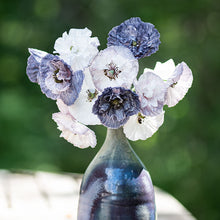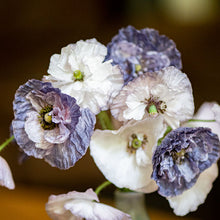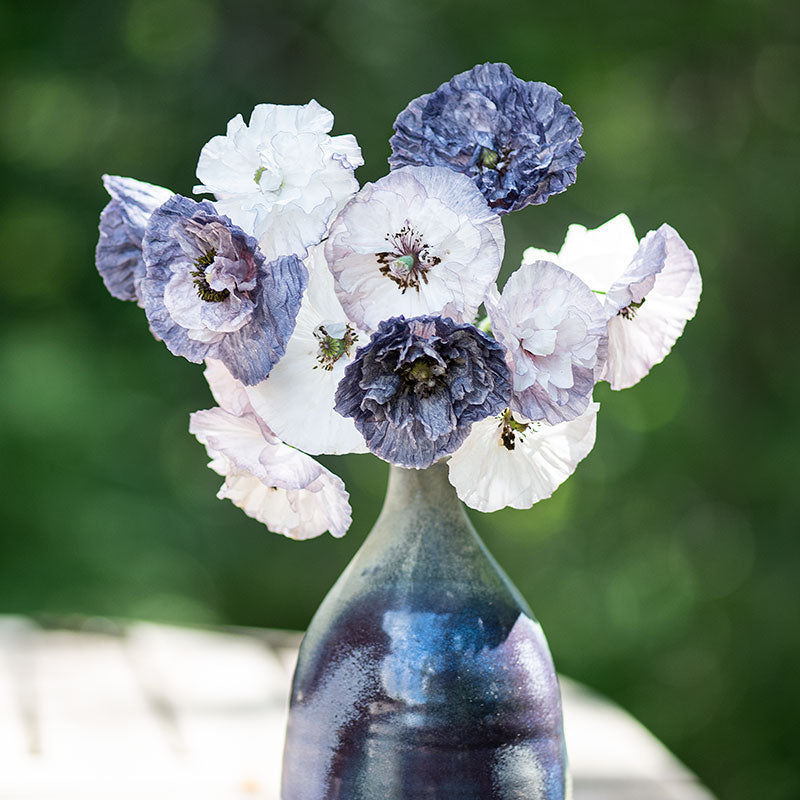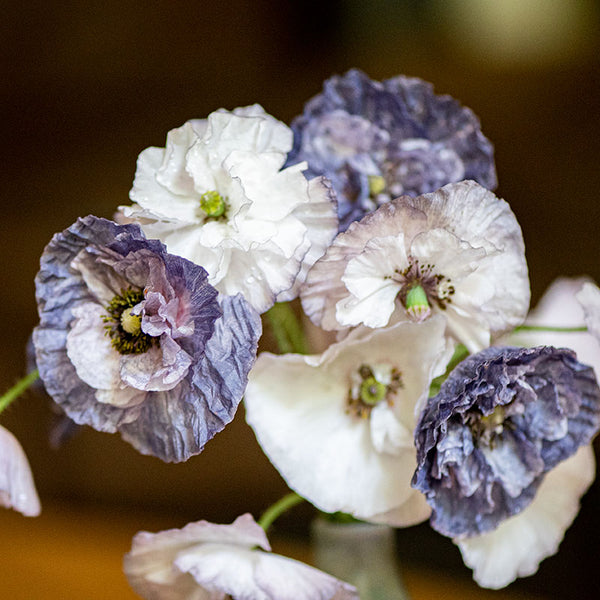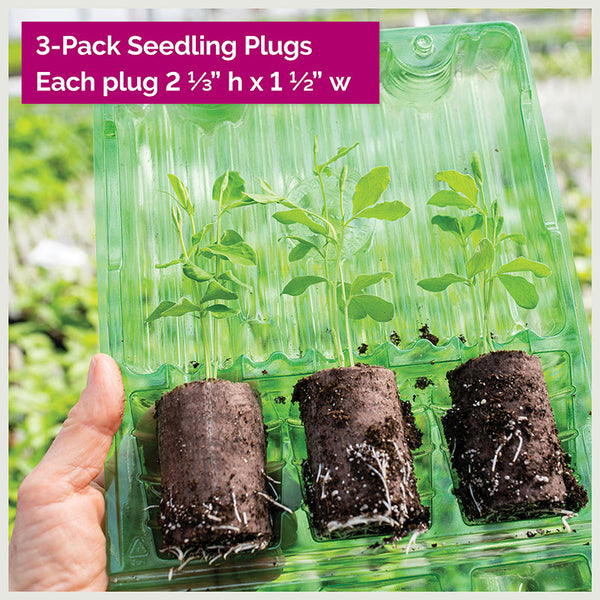WHEN TO SET OUTSIDE
At last spring frost date.
PLACEMENT & CULTIVATION
Poppies are the obsession of honeybees that unfailingly crowd around the flowers as they are freed from their corset of sepals, to be the first to sample their golden crown of pollen. Add to vegetable plots, meadows, and borders, where their early flowering fills gaps in perennial bloom times with luminous flowers. Self-sows.
Watering Details:
These plants prefer evenly moist soil, but can tolerate drought. About an inch of water per week.
Soil pH:
Slightly acidic to neutral—if soil is acidic, add some lime before planting.
Fertilizer:
Mix in 2" inches of compost prior to planting.
Diseases & Pests:
Fungal diseases can be prevented by regularly spraying with organic fungicides and spacing at least 1' apart for good air circulation. If slugs and snails damage seedlings, sprinkle the surrounding soil with pelletized iron phosphate, crushed eggshells, or diatomaceous earth.
When to Cut for Bouquets:
Cut when buds start to crack and show color. Some advise searing stem ends with flame or very hot water.






























